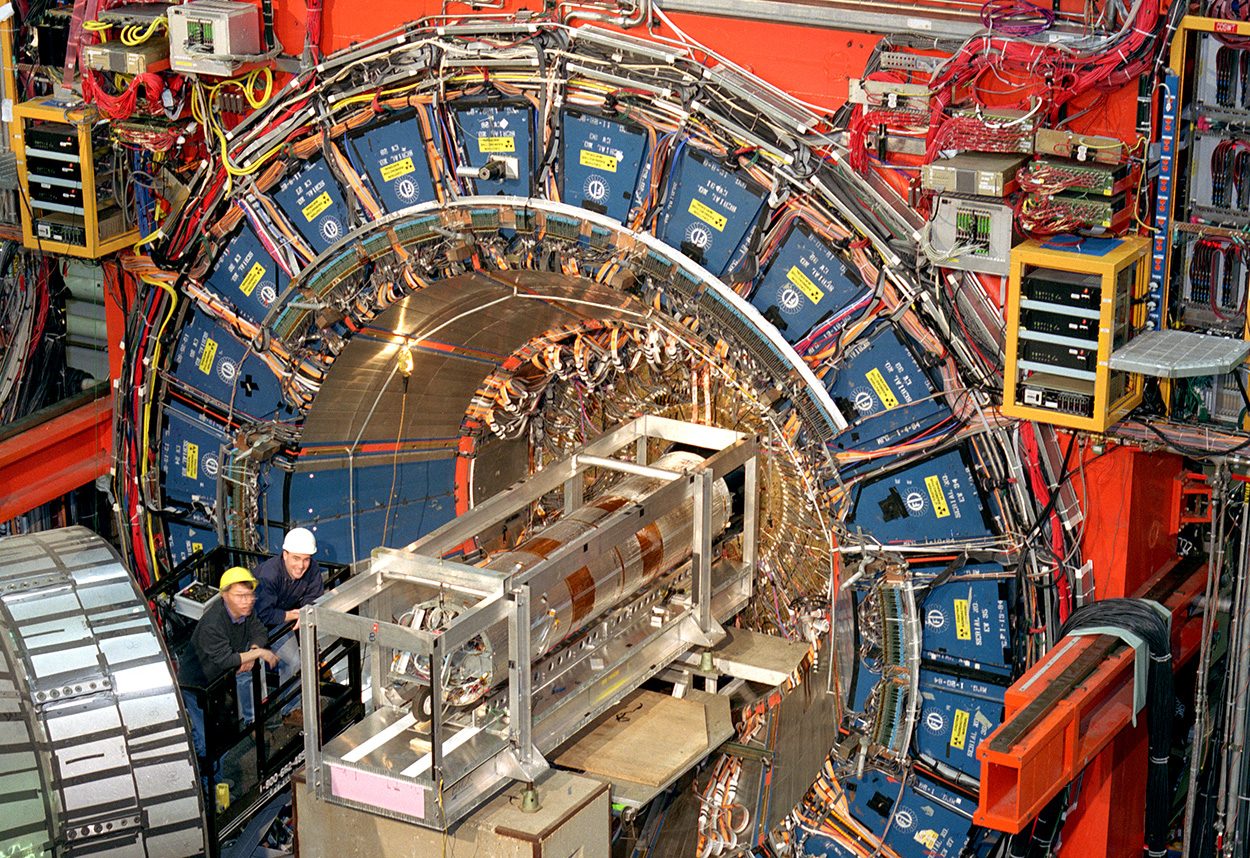The W boson is the carrier particle of the weak nuclear force, and thus is involved wherever atomic nuclei break apart or fuse. The Standard Model of Physics predicts the mass of this elementary particle. But now, the most accurate measurement of the mass of the W boson to date has shown significant deviations from the theoretical value – the W boson is heavier than it should be. According to the international research team, this discrepancy could indicate that the Standard Physical Model is incomplete and that forces or particles beyond known physics still exist.
Discovered in 1983, the W boson is one of the fundamental elementary particles in the Standard Model of Physics. Because it is one of the carrier particles of the fundamental physical forces and is mediated with the Z boson, the weak nuclear force. This always works when atoms decay or fuse with each other – for example in radioactive beta decay or fusion of hydrogen nuclei in the Sun. Whereas other measured bosons such as strong nuclear force gluons or electromagnetic interaction photons are massless, W bosons are heavyweight: according to the Standard Model of physics, their mass is about 80 times higher than that of a proton. This comes from theoretical calculations of their interactions with other particles such as the Higgs boson and the top quark, as well as the charge of the electron. If these assumptions are correct, the W boson should have a mass of 80.357 megaelectronvolts – according to the theory.
Particle decay indicates a higher mass than the W boson
Physicists from the CDF Collaboration at the Fermi National Accelerator Laboratory in the US have verified if this is true. Their measurement is based on data from the Tevatron particle accelerator, where protons and antiprotons collide at high speed. These collisions produce W bosons, which after a short time decay into either an electron and a neutrino or a muon and a neutrino. The direction of flight and the energy of the decay products can be used to determine how heavy the W boson is. For their study, scientists evaluated more than 4.2 million of these decays that were recorded in the Tevatron between 1985 and 2011. Duke University physicist Ashutosh Kotwal explains that “the data set These are four times larger than previous measurements and have twice the statistical accuracy.” “We have subjected our results to a tremendous amount of review and testing.”
Analysis of the Tevatron data revealed that the W boson has a mass of 80.4335 MeV. This makes it more difficult than current models predict. As the physicists report, the discrepancy between the new and most accurate measurement to date and the mass predicted by the Standard Model is consistent with the significance of seven sigma. It is so far well above the five sigma required for a discovery in particle physics. Thus the new, more accurate value to date for the mass of the W boson challenges the Standard Model, but at the same time confirms some previous measurements that have also found higher masses for the W boson than the values predicted by the Standard Model. However, there were also measurements, including one from the ATLAS detector at CERN’s Large Hadron Collider (LHC), which found no significant aberrations.
Is the standard form incomplete?
The discrepancies in the mass of the W boson that now appear again on the basis of a relatively accurate measurement based on a large amount of data are therefore at least a reason for further study. “The surprisingly high value of the W boson’s mass contrasts with a key component at the heart of the Standard Model,” Claudio Campaganiri of the University of California and Martin Mulders of CERN wrote in an accompanying comment in the journal Science. “It influences theoretical predictions and experimentally observed data that were previously considered well-established and well understood.” This could mean that the Standard Model is incomplete and needs correction. There may still be particles or forces in the universe that are not yet included in our knowledge catalog. “Now theoretical physicists, as well as other experiments, need to follow this up and shed light on this mystery,” says CDF spokesman David Toback from Texas A&M University.
Source: CDF Collaboration, Science, doi: 10.1126/science.abk1781

“Alcohol buff. Troublemaker. Introvert. Student. Social media lover. Web ninja. Bacon fan. Reader.”







More Stories
Newly appointed Science, Research and Innovation Council
Asparagus with Salmon and Avocado: A slightly different asparagus dish
Intelligence and Alzheimer's disease: How fit is your brain? Your eyes guide her